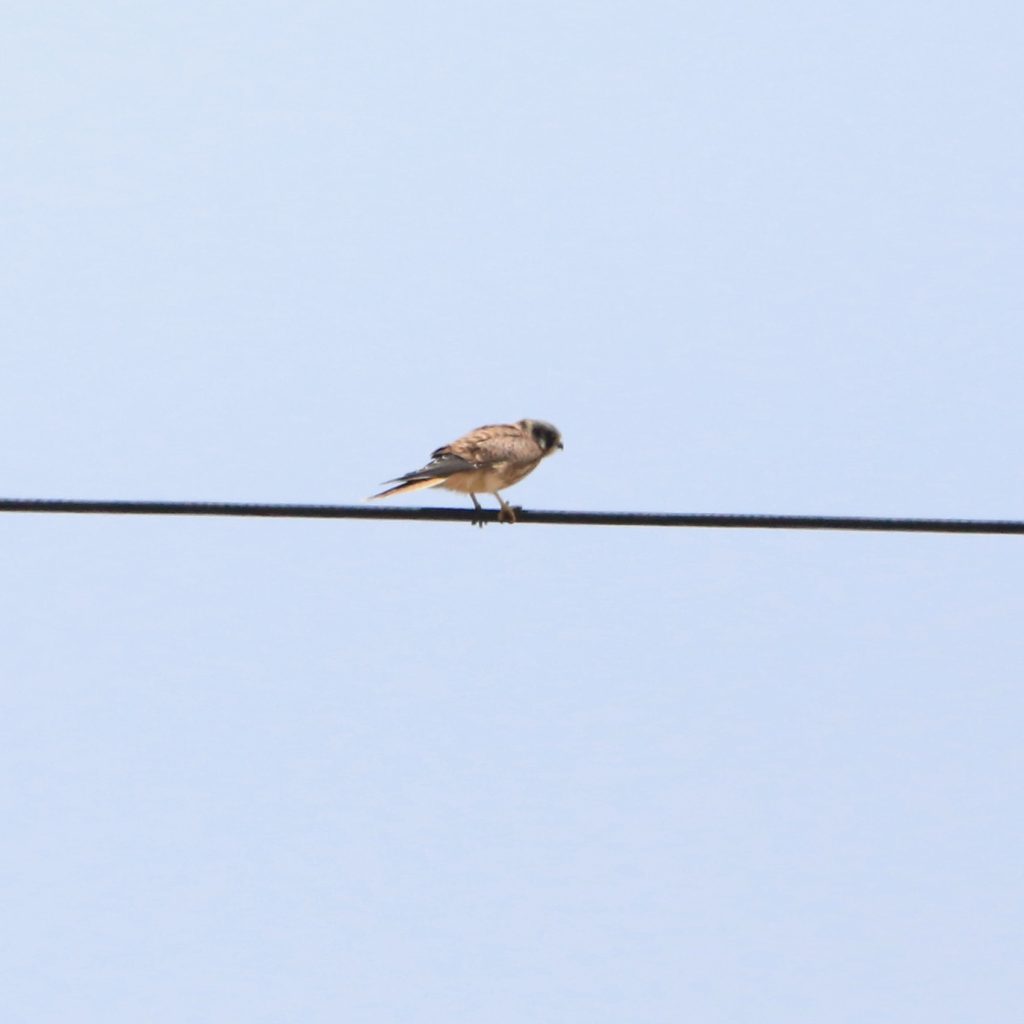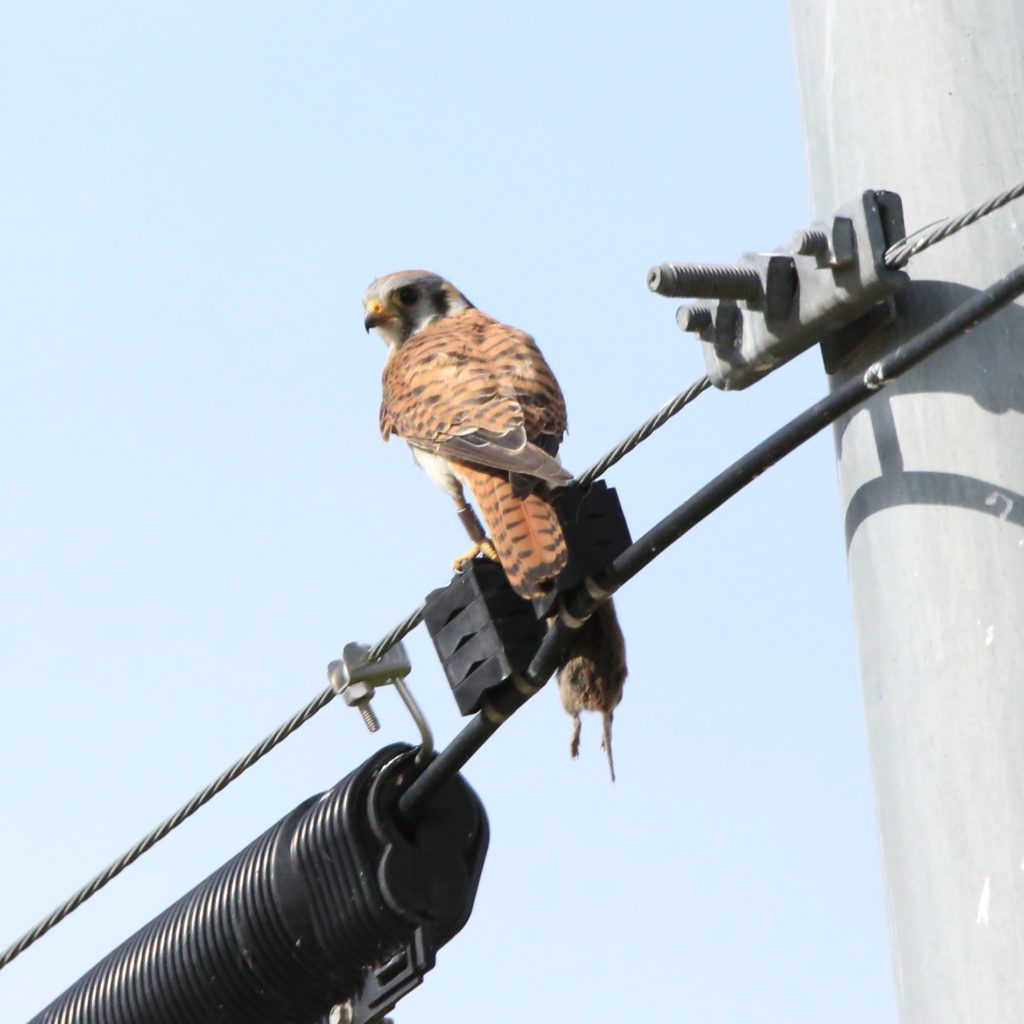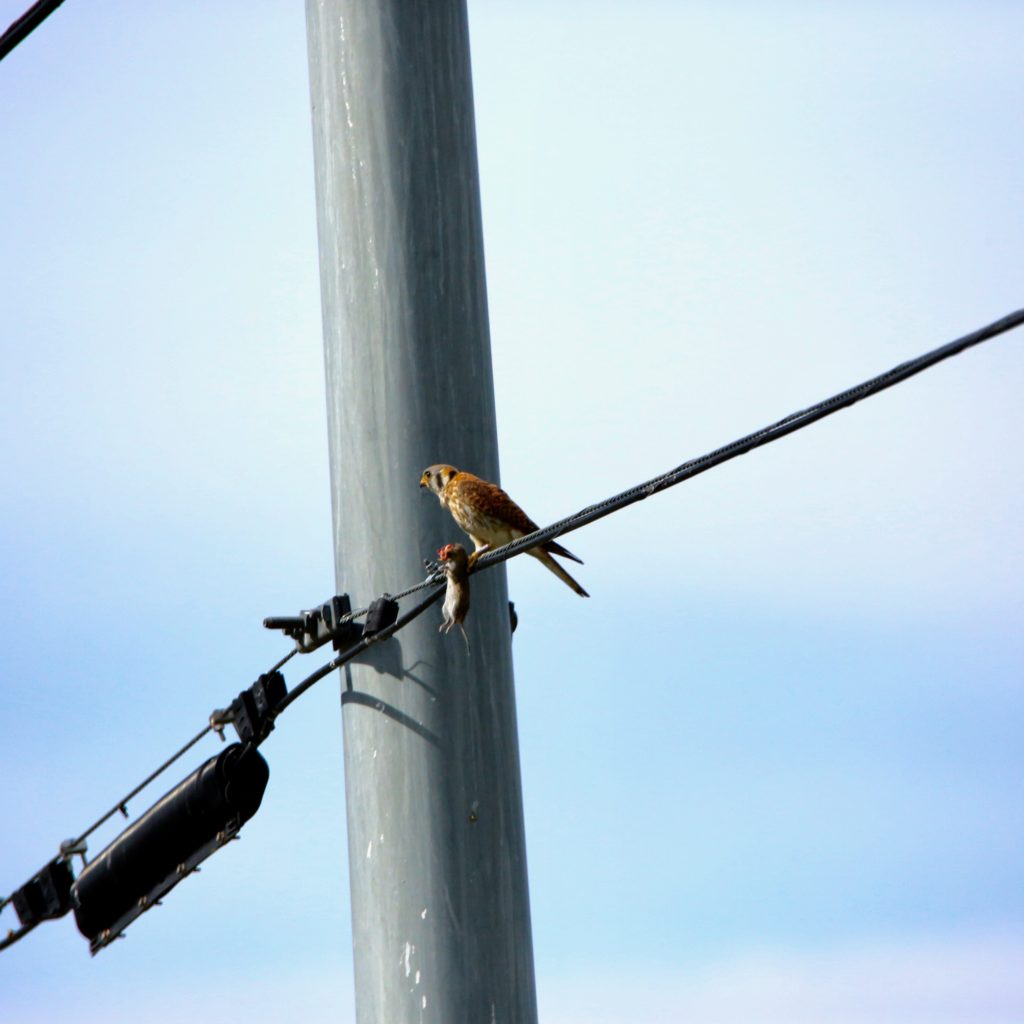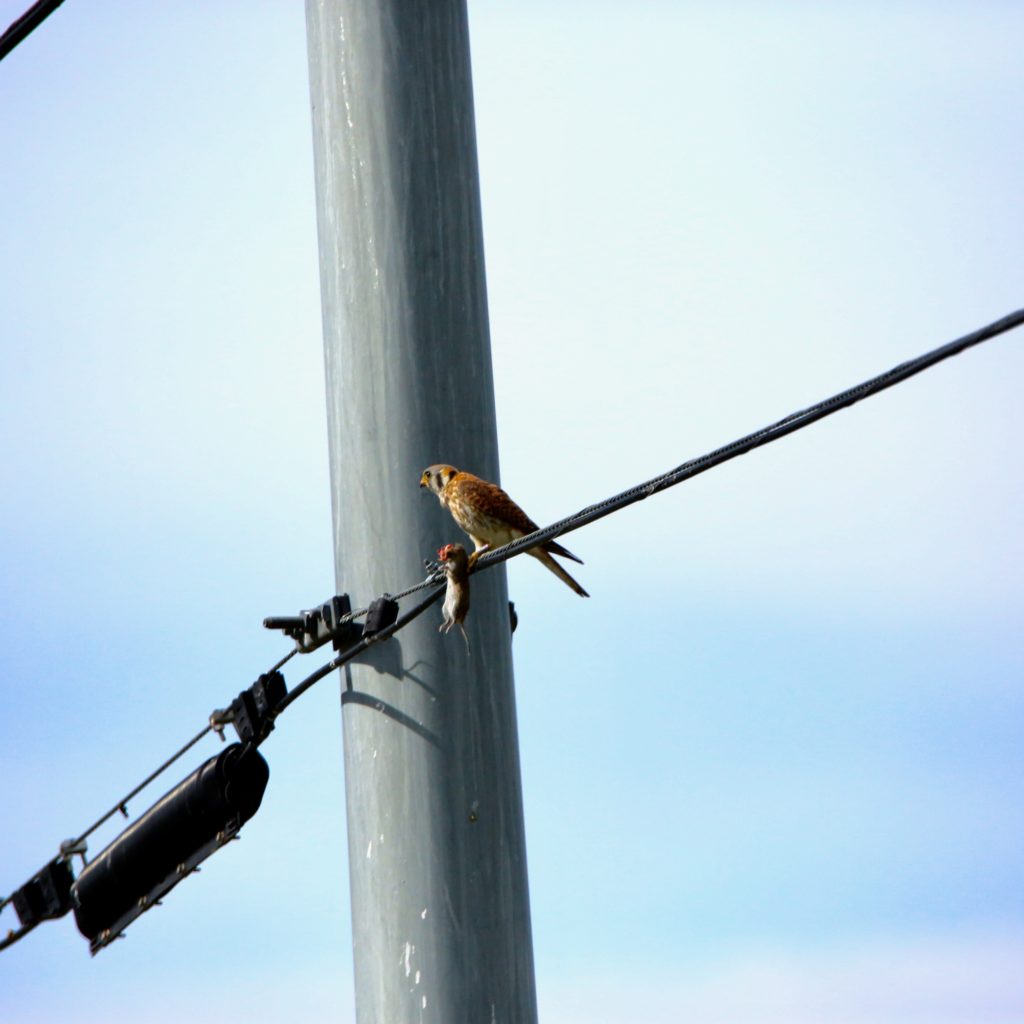
An American Kestrel is a fun bird to see while bird watching. Below are some tips to help you identify American Kestrels. We have also put together a list of fun American Kestrel t-shirts, American Kestrel bird patches, bird houses, bird feeders, binoculars, stickers and other fun bird watching items.
About American Kestrels
The American Kestrel is the smallest Falcon but it packs a predator’s fiercest character into its small body. It is considered one of the most colorful of all raptors found in North America. The eastern region is rumored to experience declining numbers but other regions still boast of healthy numbers. The bird spans its habitat as far as South America adapting to the different environments in America.
American Kestrel Color Pattern
The male Kestrel has a slate-blue colored head contrasted by his rusty-red back and tail. The female has the same reddish blend under her wings, back, and tail.
Description and Identification
These birds are about the same size as Mourning Doves. They have large heads, long and narrow wings, and a square-tipped tail. During the flight, their wingtips are swept back. They have a colorful and attractive plumage. They have a pale appearance when seen from below. Their wings and tail from above are brown and spotted with black. The males have brown streaks on the wings, while the females have reddish-brown colors. Males and females both have black strokes across their face that are often called “moustaches” or “sideburns”. Juveniles look similar to adults, also there is evident sexual aphorism between the sexes.
American Kestrel Size
The birds are fairly large animals with their lengths ranging from 22 to 31 cm and weigh about 120g. Their wingspan ranges between 51 and 61 cm while the female Kestrel is fairly larger than the male.
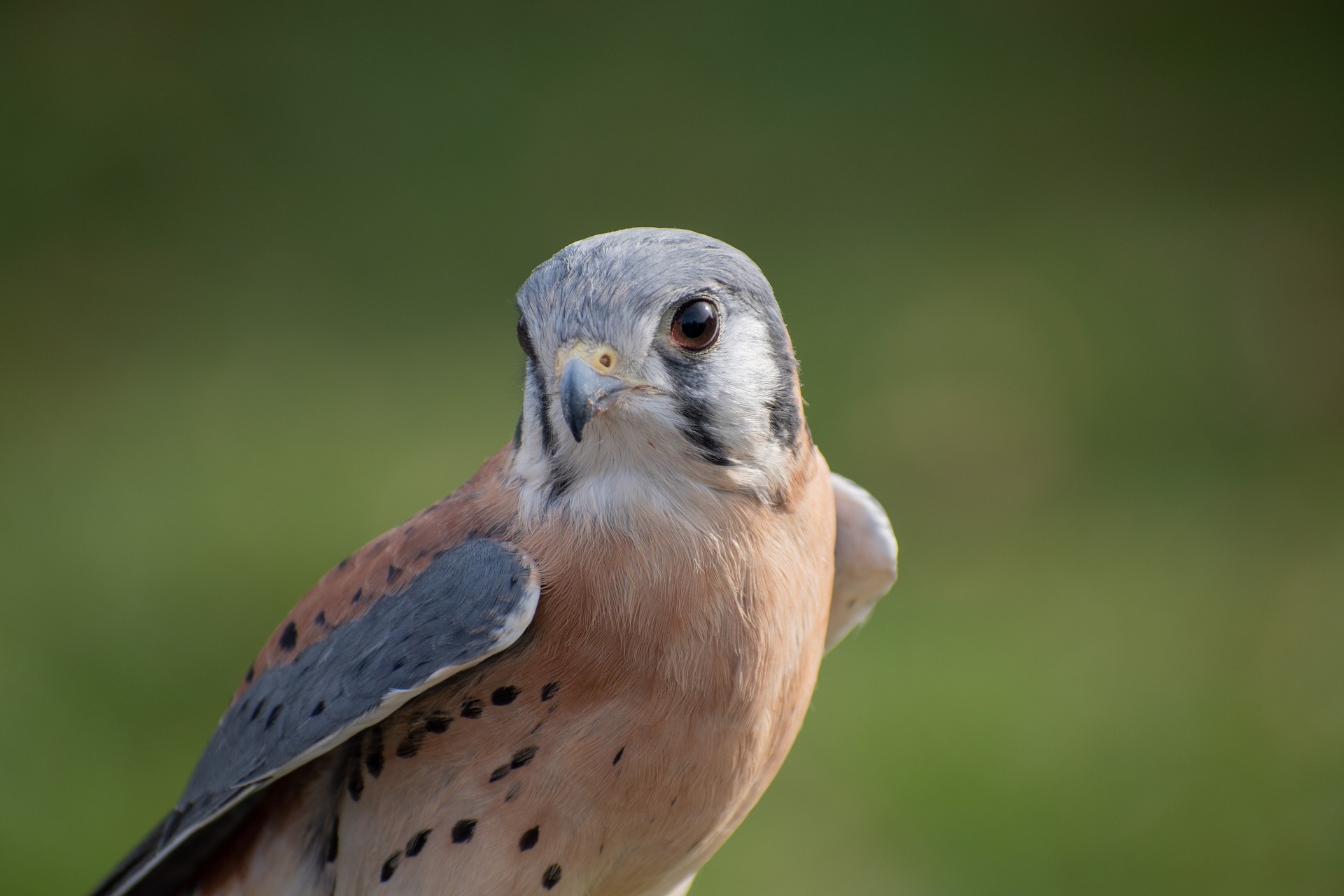
American Kestrel Behavior
The predator hunts by day while it scans for prey from the same perch all day. Sometimes, it may change perches every few minutes but when it spots its prey they pounce on it with one or two legs. If the prey is small, they prefer to eat it on the spot but if the prey is large they carry it to their nest.
American Kestrel Diet
They hunt in what is called an energy-conserving fashion. They sit atop branches, wires, and fences, scanning for prey on the ground. American Kestrels usually prey on their food on the ground, though they can also catch them mid-flight. The majority of their diet consists of grasshoppers, insects, lizards, mice, and other smaller birds. Their strong talons and beak are adapted to effectively catching prey, as is their build. They are lean and require lower daily food intake than if they had a more muscular build. Their hunting strategies have contributed to their success as a species.
The American Kestrel’s diet mainly consists of large insects such as grasshoppers which are among their favored prey. The bird can also prey on small mammals, birds, and reptiles. They include mice, bats, quails, lizards, frogs, and voles.
American Kestrel Habitat
They can occupy a range of habitats; from deserts to grasslands to alpine meadows. They are spotted in an open country near short vegetation and few trees. They inhabit open or semi-open spaces such as farmlands, cities, and wood edges. In winter, more females are spotted in open areas than males. Although they are so abundant in North America as a species that their population is difficult to account for, during breeding seasons, they are often limited to areas that provide nesting opportunities. In the Southwest, they might also occupy giant hollow cacti.
The bird can adapt to different kinds of environments. Therefore, bird watching can happen in different locations in North America. They can be found in the open country, farmlands, cities, and woodland edges as they can inhabit any kind of open or semi-open habitat. They live in curvatures mostly in trees and wooden poles.
Range and Migration

These are the smallest Hawks and most common falcons in North America. Their range is widely spread across Central America and South America, occupying areas in Alaska, Nova Scotia, Canada, the Caribbean, and Mexico. Birds in Canada and northern America migrate south during winters, to the southern United States and northern Mexico. Birds in the east depend on coastlines rather than inland corridors and do not hesitate to cross waters. In totality, their numbers are stable. However, the eastern populations have been found to be affected due to human developmental activities and agricultural abandonment.
Nesting
American Kestrels nest in hollow cavities. Both sexes contribute to the incubation of the eggs after mating, however, the process is initiated as males move into the area. Females select their mates and strong, often permanent mates are formed. They often reuse nests from previous nestings. They usually prefer natural settings for nesting; hollow cavities with narrow entrances to keep away intruders and to keep their eggs and younglings safe. They use nests previously built by woodpeckers or other birds. They have also been observed to use nesting boxes.
American Kestrel Lifecycle
Females lay 4-6 eggs that usually take 28-31 days for incubation. Once they hatch, nesting takes about 30 days before the young are ready to take flight. The average lifespan of a captured American Kestrel is 14-17 years. The oldest ever recorded wild Kestrel bird is 11 years 7 months.
Ornithology
Bird Watching Academy & Camp Subscription Boxes
At the Bird Watching Academy & Camp we help kids, youth, and adults get excited and involved in bird watching. We have several monthly subscription boxes that you can subscribe to. Our monthly subscription boxes help kids, youth, and adults learn about birds, bird watching, and bird conservation.
- Kids Bird Watching Monthly Subscription$10.00 / month
- Kid & Adult Bird Watching Starter Pack Subscription$10.00 / month and a $72.00 sign-up fee
- Kids Bird Watching Starter Pack Subscription$10.00 / month and a $19.00 sign-up fee
Bird Watching Binoculars for Identifying American Kestrels
The most common types of bird watching binoculars for viewing American Kestrels are 8×21 binoculars and 10×42 binoculars. Bird Watching Academy & Camp sells really nice 8×21 binoculars and 10×42 binoculars. You can view and purchase them here.
- Birding Binoculars$49.99
- Kids Binoculars$13.99
American Kestrel T-shirts
If you love the American Kestrel you should purchase a Bird Watching Academy & Camp T-shirt. To help support bird conservation we donate 10 percent to bird conservation activities.
American Kestrel Iron On Patches
Kids, Youth, and Adults love to collect our Bird Watching Academy & Camp iron-on patches. Our bird-watching patches help you keep track of the birds you have seen and identified. You can also display the patches on our Bird Watching Academy & Camp banners.
The American Kestrel is a great iron-on patch to start your collection with. The patches are durable and can be sewn on or ironed on to just about anything.
- American Kestrel Iron on Patches$2.99
- Bird Banner$10.99
American Kestrel Stickers
Stickers are a great way for you to display your love for bird watching and the American Kestrel. We sell a monthly subscription sticker pack. The sticker packs have 12 bird stickers. These sticker packs will help your kids learn new birds every month.
Bird Feeders For American Kestrel
There are many types of bird feeders. Bird feeders are a great addition to your backyard. Bird feeders will increase the chances of attracting birds drastically. Both kids and adults will have a great time watching birds eat at these bird feeders. There are a wide variety of bird feeders on the market and it is important to find the best fit for you and your backyard.
Best Bird Houses for American Kestrel
There are many types of bird houses. Building a bird house is always fun but can be frustrating. These 4 bird houses have become our favorites. Getting a bird house for kids to watch birds grow is always fun. We spent a little extra money on these bird houses but they have been worth the higher price and look great.







